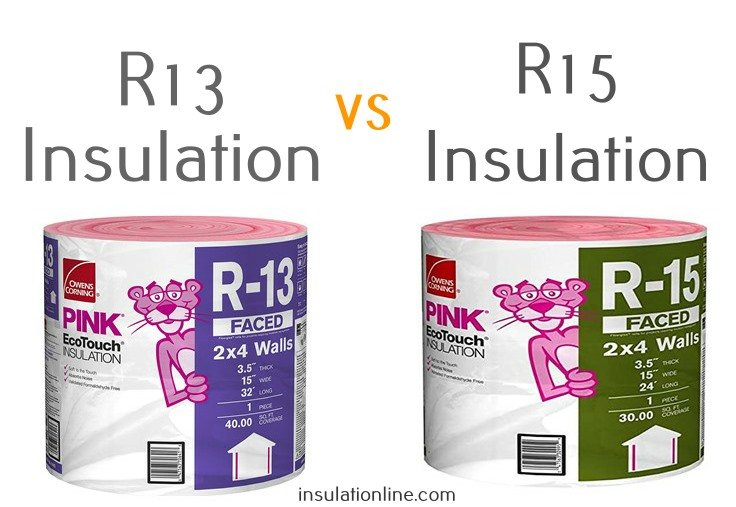When it comes to insulating your home, choosing the right R-value is crucial for achieving optimal energy efficiency and comfort. R13 and R15 are two common options for wall insulation. Let’s explore the differences and see which one might be the better choice for your needs.
Comparing R13 vs R15 insulation is not difficult. You can list each effectiveness and then choose which one you believe is best for your insulating needs.
R13 insulation, often used as wall insulation, is best suited for individuals in somewhat warm climates. Adding extra sheets of this shielding can assist in boosting heat resistance and can include vapor barriers for added protection.
Understanding R-Value
The R-value measures the insulation’s ability to resist heat flow. The higher the R-value, the greater the insulating power. R13 and R15 insulation are often used in 2×4 wall cavities.
The following are the primary advantages of utilizing R13 insulation in the household:
Read also: Is Blown-In Mineral Wool Insulation Effective?
- Great for Warmer Climates
R13 insulation, including fiberglass batts, performs effectively in mild to moderate temperatures with significant warmth. It’s particularly beneficial in heating and cooling applications when applied to exterior walls and floors, including basements, to avoid significant heat transfer or block cold out, especially in colder climates.
- Regulates Moisture
R13 insulation uses waterproof materials to avoid moisture absorption, making it suitable for areas like basements, where r13 insulation for basement walls is crucial. This feature ensures the insulation material does not absorb excessive dampness.
Read also: Is Spray Foam Insulation Waterproof?

- Improved Energy-Efficiency
R13 insulation, when properly insulated in wall cavities, will also considerably increase the energy efficiency of a building. With the correct material, the insulation will enable you to regulate the movement of air in or out of the building, enhancing heating and cooling efficiency. As a result, the AC system runs more efficiently, lowering energy usage.
- Excellent for Tight Spaces
R13 insulation is appropriate for confined spaces with a limited surface area. It means you can use it in your loft, basement, or almost any other area in your house.
- A Wide Selection of Materials
R13 insulation comes in several substances, such as foam, concrete, and fiberglass. Because each of those substances has great heat resistance, you may select one suitable for you.
R15 insulation is more thermally resistant compared to R13. However, this is not the only advantage of utilizing this insulation in the home. The following is a summary of the top benefits associated with R15 insulation.
- Higher Heat Resistance
R15 insulation resists heat somewhat better compared to R13. It works in areas where the temperature is generally hot. What is R15 insulation used for? It is excellent for insulating ceilings, attics, basements, or walls.
- Regulating Moisture
R15 substances, similar to R13 insulation, can protect your house from high dampness. As a result, it is an excellent solution for insulating often exposed regions such as ceilings, attics, and basements.
- Pest Protection
When comparing R13 vs R15 insulation, R15 insulation guards off pest invasion more efficiently. It can deter hazardous bugs which could cause significant damage to the home’s components or spread illnesses.
- Versatile
R15 insulation is ubiquitous and ideal for external floors, walls, attics, and basements. Because of its better heat resistance, the substance is also appropriate for usage in hotter climates with ample sunlight.
From My Experience
From my years of working in home insulation, I’ve often recommended R13 insulation for interior walls in homes located in mild climates. It’s a cost-effective solution that provides adequate thermal resistance for such regions. However, in areas with more extreme temperatures, I always advise considering higher R-values for better performance.
Using R15 insulation in the exterior walls significantly improved the home’s overall energy efficiency and reduced heating costs during the winter months.
R13 VS R15 For Sound
R13 insulation can block off unwanted noises. However, the insulating material type can affect the effectiveness of noise reduction. For instance, R13 spray foam insulation is far more effective than fiberglass insulation for noise reduction.
Read also: Does Insulation Help With Sound?
Therefore, you should verify your government’s soundproofing standards before choosing any insulating material.
The other one, featuring an R15 insulation thickness extending from 3.5 to 4 inches, can significantly decrease external noise from entering your home. The degree to which it may block noise relates to the depth and substance utilized.
R13 VS R15 Cost
The primary purpose of insulating is to handle the warmth in your house better. The more the insulation preserves your house’s comfort level, the more efficient the power in your home can be. Due to this fact, you can decrease energy costs!
Essentially, the greater the R-value, the better the heat rejection. As a result, R15 has better thermal management than R13, yet you must always consider the overall picture, including factors like climatic zones and specific building requirements.
You might sometimes choose R13 insulation for its suitability in certain wall cavities and compliance with the Department of Energy guidelines. In other cases, R13 can be preferable since it can fit into narrower gaps to stop draughts.
When considering R13 and R15 insulation, it’s essential to understand the specific needs of your space. R13 insulation is generally thinner and can fit into tighter spaces, while R15 provides higher thermal resistance but may require more room for installation.
Both types of insulation play a crucial role in maintaining a comfortable indoor environment and reducing energy costs.
Evaluating R13 and R15 Insulation: Climatic and Spatial Considerations
Choosing between R13 and R15 insulation often depends on the specific needs of your home. For instance, in colder climates, R15 insulation might provide better thermal resistance, while in warmer regions or specific areas of a house, like an unfinished basement, R13 could be more suitable.
It’s important to consider the insulation products available and how they fit into your home’s wall cavities to ensure optimal energy efficiency.
Additional Insights
A recent discussion among homeowners and experts highlights that “R15 insulation is preferable for soundproofing due to its higher density, which helps to dampen sound transmission better than R13.” This aligns with my experience, as I’ve observed improved acoustic performance in spaces insulated with R15.
Comparison Table
| Feature | R13 Insulation | R15 Insulation |
|---|---|---|
| Thermal Resistance | Moderate (R13) | Higher (R15) |
| Cost | Lower | Higher |
| Soundproofing | Adequate | Better |
| Availability | Widely available | Less widely available |
| Best Use | Mild climates, interior walls | Colder climates, sound-sensitive areas |
So, that is some important information about R13 vs R15 insulation. If you are curious about both, please consult a professional before proceeding with the setup or installation in your house or building.


